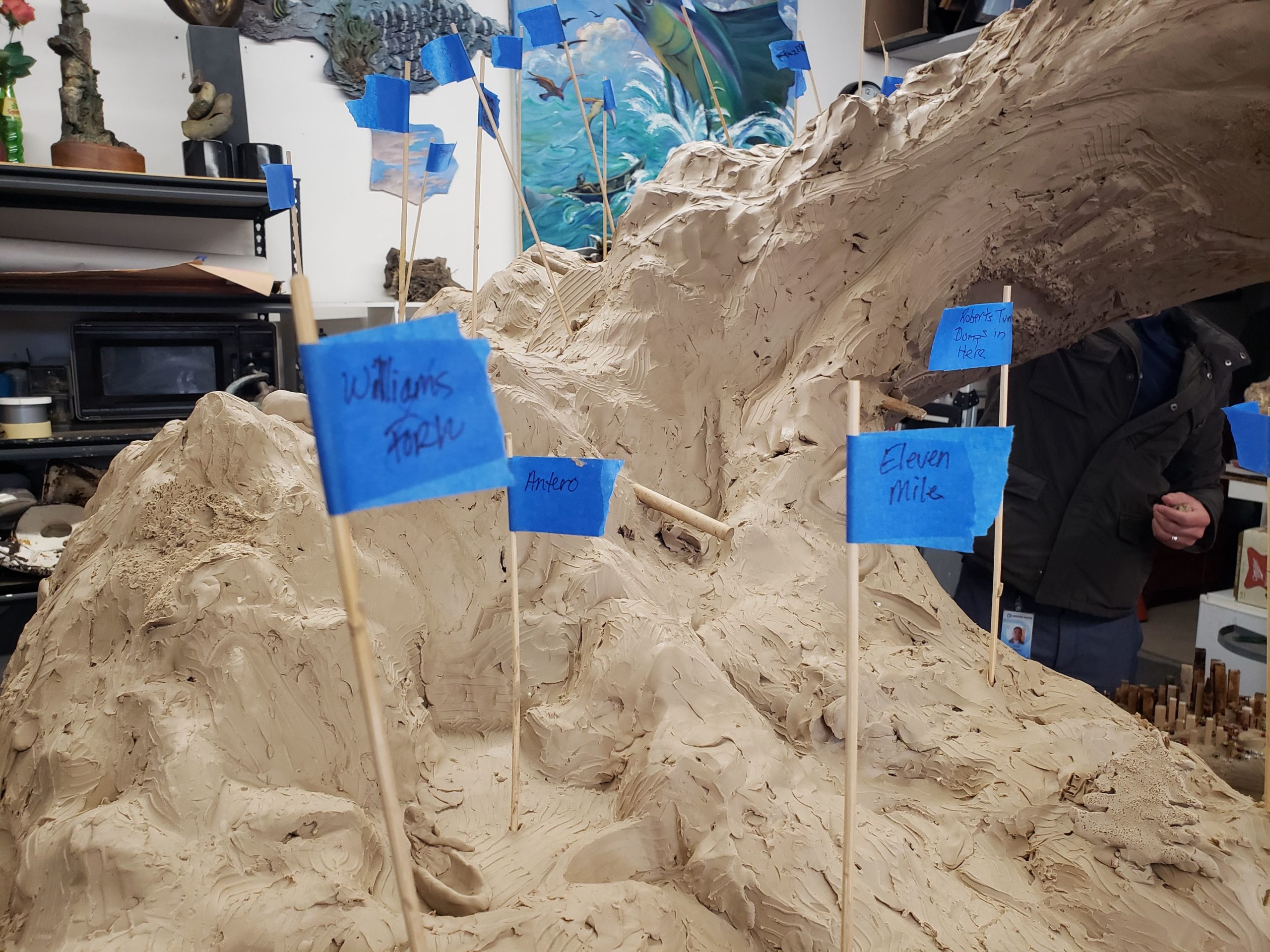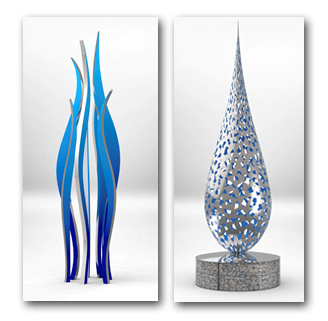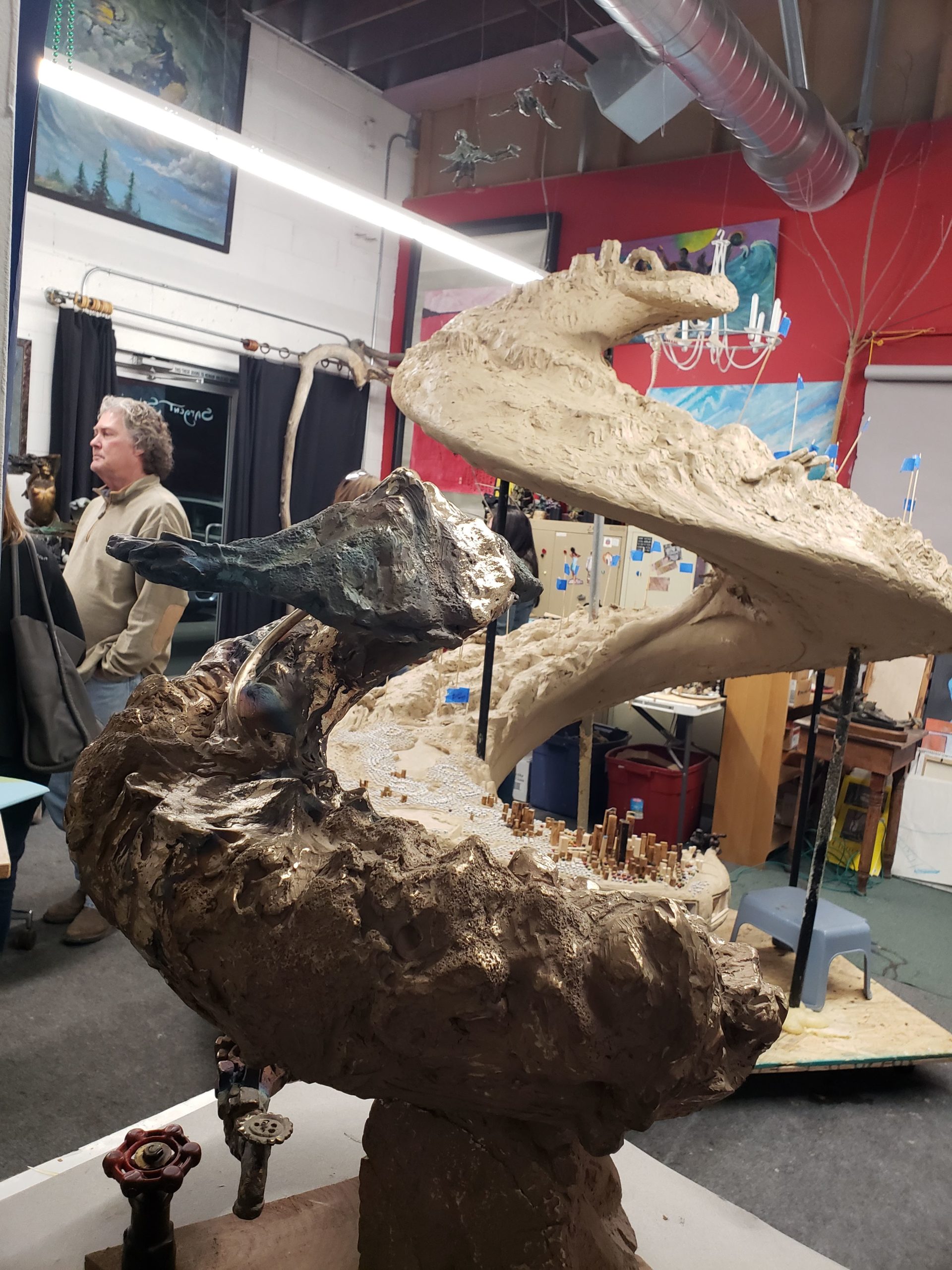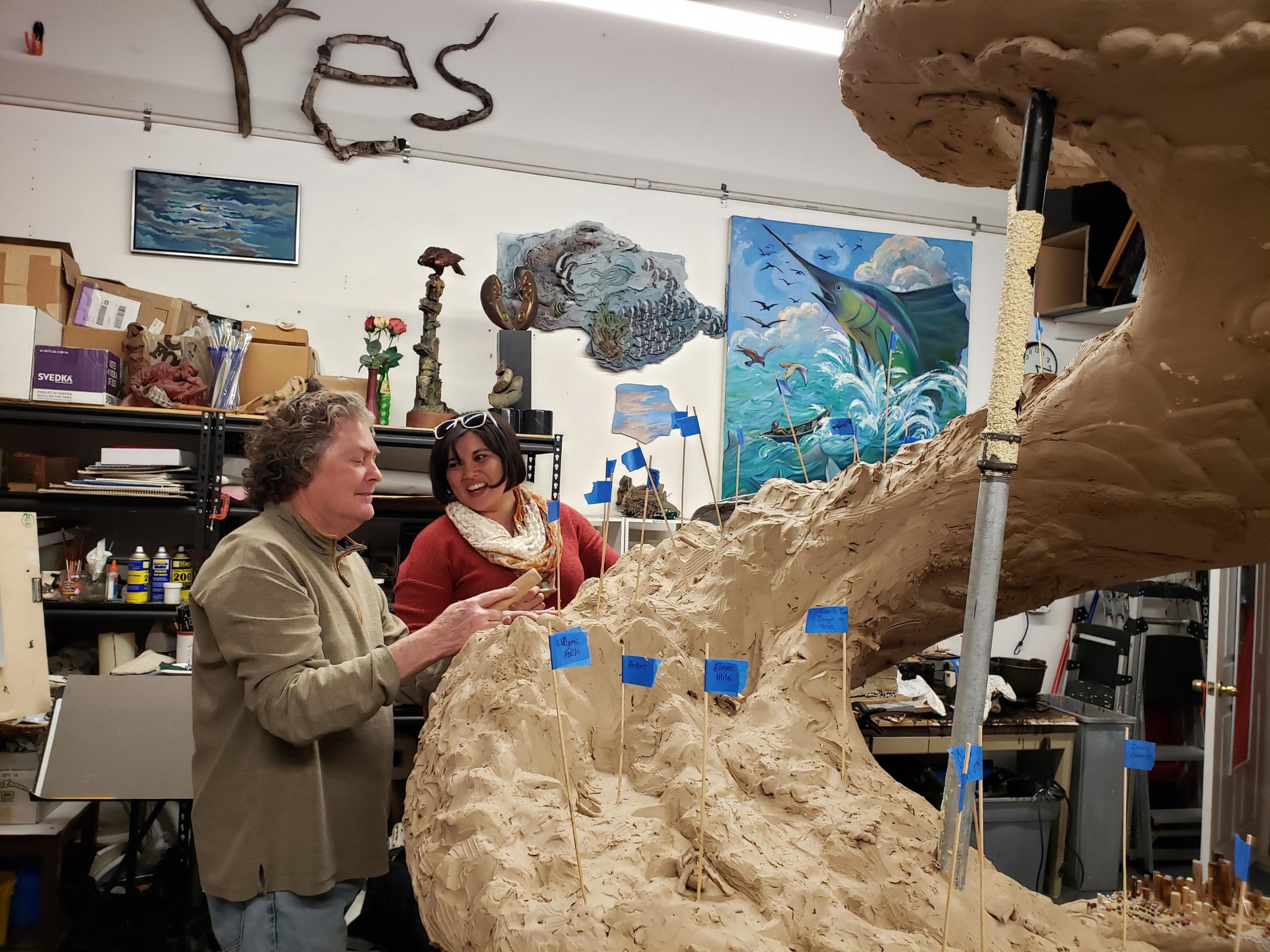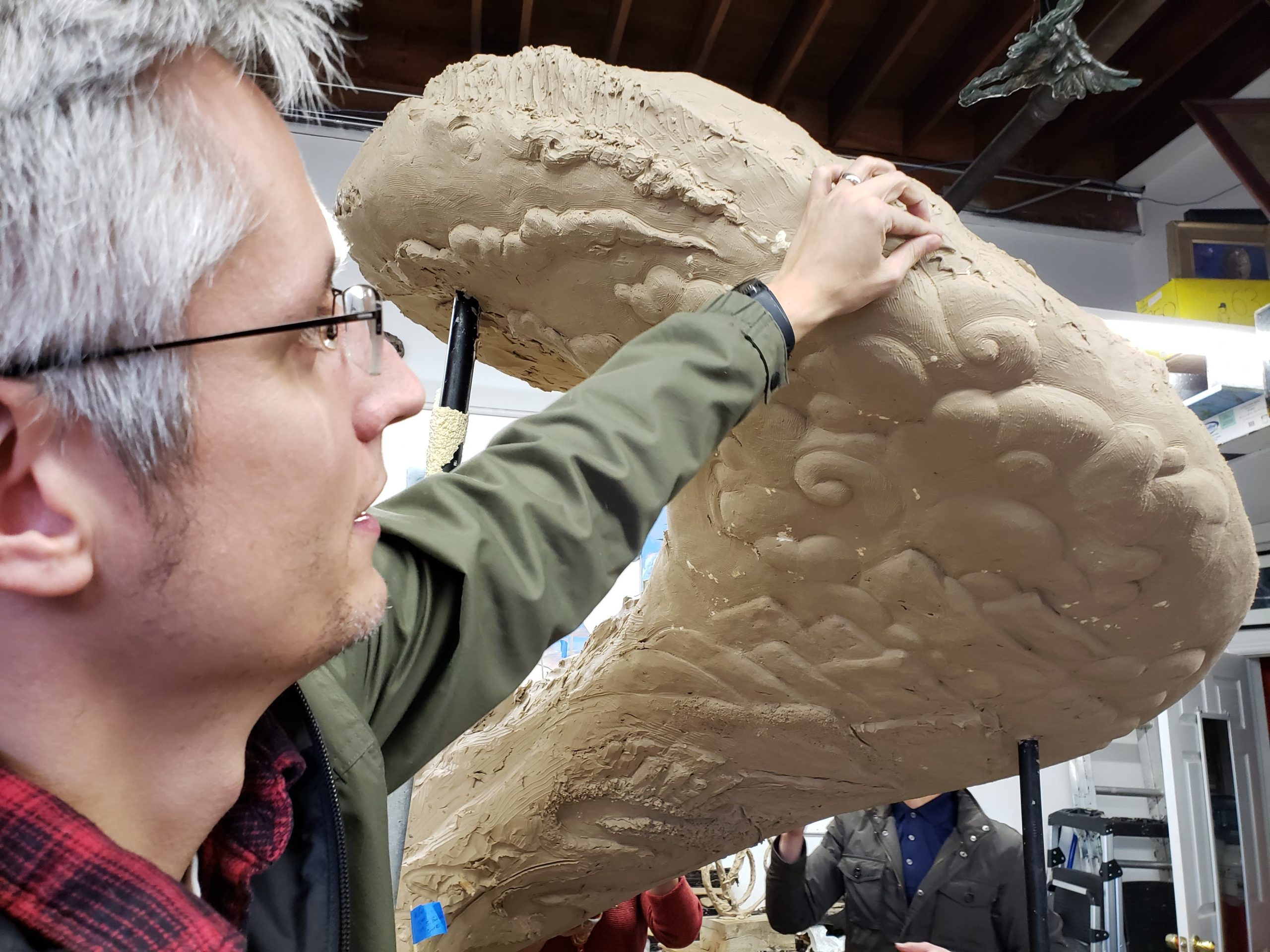
Celebrating the value of water with art
What would you add, if you were asked to help mold a bronze sculpture depicting water’s journey from the mountains to the city’s faucets?
As local artist Rik Sargent started work on a new piece of public art commissioned by Denver Water — before stay-home and social distancing orders were put in place due to COVID-19 — he invited the utility’s employees into his sculpture studio and asked that same question.
The employees — representing different parts of the 1,100-person organization — were invited to see, touch and add to Sargent’s clay model. Sargent’s finished work will be one of three pieces of public art installed on Denver Water’s redeveloped Operations Complex southwest of downtown.
Sargent’s bronze sculpture, featuring a broad vertical spiral and called “Forests to Faucets,” aims to tell the story of the journey of Denver’s water as it passes from high-country snowdrifts, through mountain streams and man-made reservoirs, treatment plants and pipes, to the metro area, where Denver Water serves 1.5 million people in the city and surrounding suburbs.
The name of the sculpture also ties to the “From Forests to Faucets” land management program that involves Denver Water, the U.S. Forest Service and other partners working to mitigate forest fires that damage the watershed.
“It’s exciting to see a sculpture that recognizes our watershed,” said Christina Burri, who manages Denver Water’s involvement in the program and came to see Sargent's clay model in January.
Utility employees made their mark in the sculpture’s clay, using flags to identify key landmarks in Denver Water’s system, such as Dillon Reservoir, Denver Water’s largest reservoir, and the Moffat Tunnel, which brings water from the West Slope.
Some fashioned bits of clay into trees, animals or buildings and pressed them onto the larger sculpture. Others hammered the clay with tools, shaping forests onto the malleable peaks and valleys.
“I’m very committed to making sure that, when people look at this, they see the story of water,” said Sargent, who has created many public art sculptures during his career, including a water-centered sculpture for the One World One Water Center at the Auraria Campus.
His “Forests to Faucets” bronze sculpture will be one of three new public art pieces commissioned by Denver Water as part of the redevelopment of its 35-acre complex. The multiyear project replaced aging buildings, in one case 130 years old, and made the complex more operationally efficient, publicly accessible and as sustainable as possible.
As part of the project, Denver Water is voluntarily participating in the city of Denver’s public art program. The program encourages new capital improvement projects in Denver that have a design and construction budget of $1 million or more to invest 1% of the budget in public art.
“Being the best utility in the nation means we are committed to the social and economic well-being of our community — and art is a part of that,” said Jessica Kirk, a Denver Water marketing specialist who helped guide the selection process.
In addition to Sargent’s work, British artist David Harber will create two sculptures for the Operations Complex inspired by water: “The Hydra” and the “Water Droplet.”
“We wanted (the public art pieces) to educate the public about the value of water while trying to inspire an appreciation for and conservation of a vital resource,” Kirk said.
Utility employees who visited Sargent’s studio molded cabins out of clay to add to the sculpture. Other additions included snakes, birds and fish.
Tanisha Lucas, a Customer Care supervisor, smoothed a section of clay into a lake and then used a brush to hammer forests to life.
“I wanted to be able to say, when this is finished, that ‘I touched this,’ and, I like to swim in alpine lakes,” Lucas said.
All three sculptures are expected to be installed on the Operations Complex later this year, as initial schedules have been delayed due to the complications that surround the global pandemic.
During stay-home orders earlier this year, Sargent closed his studio, as did others he works with in the art sector. For a bronze sculpture, teams of people often work together to create the final piece of art, including the process of creating molds of the clay and pouring bronze into those molds.
“A lot of the talent base that I typically work with is not available,” Sargent said.
So he did the work himself, albeit at a slower pace.
“I can make molds, but for a project this big I’d typically have a team of people come in and they’d hit it and get it done in a week or so. It’s taken me longer than that to do that on my own. But luckily, I’ve been an artist long enough that I can do all the elements to finish the work,” he said.
Sargent recently visited Denver Water’s Operations Complex to see the site where his sculpture will be displayed.
“It’s a beautiful site, I’m delighted with it,” he said.
“Denver Water is one of the many wonders of the world. You go to the faucet and turn on the faucet and — it’s there. Denver’s water.”
The three public art pieces will be placed in three locations on the Operations Complex:
- “The Hydra” will be placed at the corner of West 13th Avenue and Shoshone Street, where it will be visible to passengers on the nearby light rail line and can be used as a landmark to identify the entrance to the complex.
- The “Water Droplet” will be placed near the main entrance to the Administration Building (on the north side of the building), where it will be visible from Denver Water’s boardroom.
- The “Forests to Faucets” will be placed in the courtyard between the new Administration Building and the historic Three Stones building.


